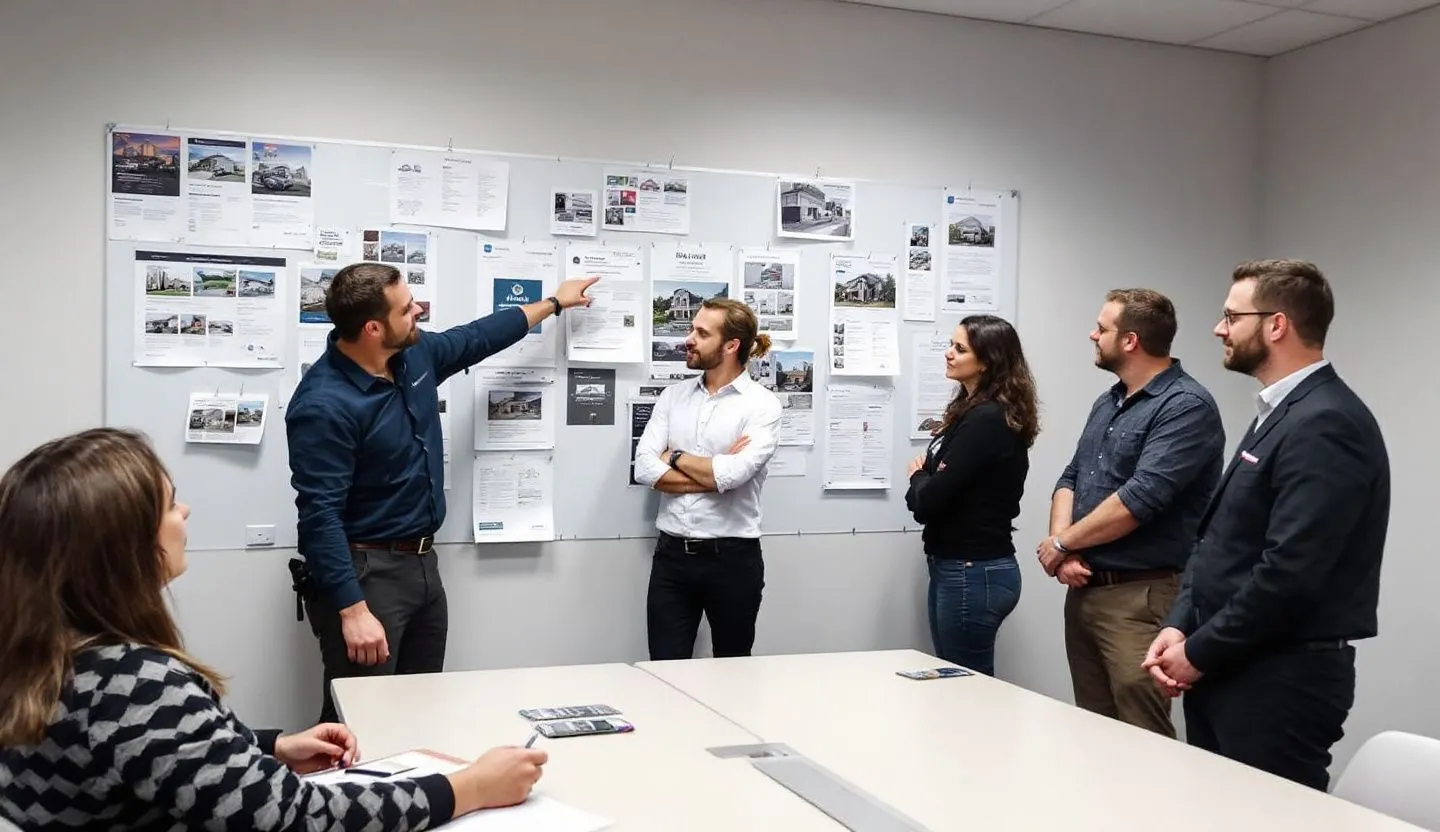If you’re reading this, you know the daily tension between speed, scale, and brand control. You’ve seen brilliant creative get bogged down in endless approval loops, or local teams “go rogue” with outdated logos because they needed to hit a deadline. I’ve been there too,leading teams across continents, wrangling thousands of digital assets, and trying to maintain a single source of truth amid constant change. In 2025, these struggles aren’t going away. They’re just evolving.
The stakes have never been higher for automotive marketing leaders. Between new digital channels, regulatory scrutiny, and the demand for hyper-personalized content, the pressure is relentless. We’re not just selling cars; we’re managing brand ecosystems, ensuring compliance, and empowering distributed teams,all while moving faster than ever. This is why automotive digital asset management (DAM) is no longer just a back-office IT tool. It’s the heartbeat of our brand operations.
Let’s dig into the real pain, the seismic shifts underway, and how the right approach to automotive digital asset management can turn these challenges into your next competitive advantage.
The real pain: The chaos behind the curtain
Let’s be honest. Even with a DAM system in place, most automotive brands still struggle with asset chaos. I’ve seen it firsthand,a global automaker with five different versions of the same campaign running in different markets, each with slightly different disclaimers, color palettes, or even vehicle specs. Every region thinks they’re “just tweaking” for their audience, but the result is brand dilution and compliance headaches.
The pain is felt everywhere. Marketing teams waste hours searching for assets, recreating lost files, or chasing approvals. Legal and compliance teams struggle to keep up with changing regulations and brand guidelines across geographies. IT leaders battle with integration nightmares, security risks, and growing storage costs as asset libraries balloon. Meanwhile, local dealerships or partner networks often take matters into their own hands, leading to off-brand collateral and inconsistent customer experiences.
The pressure to deliver more content, faster, and at scale only intensifies these problems. In 2025, we’re not just talking about hero images and TV spots,we’re orchestrating omnichannel campaigns, interactive configurators, AR experiences, and vehicle data sheets, all personalized to micro-segments. The volume and complexity are off the charts.
This asset chaos isn’t just an operational nuisance; it’s a strategic risk. Every misused logo, outdated legal disclaimer, or unsecured file can erode trust, invite fines, and cost millions in lost brand equity. For enterprise marketing and brand leaders, the chaos is real,and the cost is climbing.
The shift: Why automotive digital asset management must evolve
The old way,centralized DAM platforms used mainly by creative or brand teams,isn’t enough. The automotive industry is transforming on every front, and digital asset management has to keep up. What’s changed? Three major shifts come to mind.
- First, the digital content explosion: In 2025, the average automotive brand manages hundreds of thousands of assets, from HD video to 3D renderings, configurator elements, and compliance docs. The rise of connected vehicles and IoT means even more data-driven assets, all demanding strict governance.
- Second, the demand for real-time, localized marketing: Regional teams, dealer networks, and even external partners need instant access to approved assets,and the ability to personalize them,without waiting days for HQ sign-off. This tension between control and agility is at the heart of every enterprise marketing conversation I have.
- Third, regulatory and security demands: GDPR, CCPA, and a wave of global data privacy laws mean every asset must be tracked, permissioned, and auditable. Security breaches or compliance failures aren’t just embarrassing,they’re existential threats.
These shifts mean automotive digital asset management must become smarter, more connected, and truly enterprise-grade. We need platforms that bridge marketing, IT, legal, and operations, not silos. And we need strategies that make DAM the engine of value creation, not just cost control.
Building the foundation: A modern DAM strategy for 2025
As a marketing or brand leader, I’ve learned that a modern automotive digital asset management strategy starts with ruthless clarity. What’s the core purpose of DAM in your enterprise? For us, it’s threefold: protect the brand, enable speed-to-market, and unlock operational efficiency at scale.
But this is easier said than done. The foundation of any DAM transformation rests on four pillars: unified asset governance, scalable architecture, seamless integrations, and user-centric design.
- Unified asset governance: means every asset,from a global campaign video to a dealer-specific price list,lives in a single, trusted environment. No more rogue Dropbox folders or email attachments. Every file is tagged, versioned, and permissioned based on real-world business rules.
- Scalable architecture: is critical. In 2025, your DAM must handle exponential growth in asset types, formats, and users. Cloud-native platforms with elastic storage, AI-driven metadata, and high availability are table stakes. I’ve seen teams crippled by legacy DAMs that buckle under peak campaign loads or can’t support new file types like interactive 3D.
- Seamless integrations: are non-negotiable. Your DAM is only as powerful as its connections,to creative tools like Adobe CC, to marketing automation platforms, to PIM and CMS, and to security and compliance systems. A disconnected DAM is just another silo.
- User-centric design: is often overlooked, but it’s everything. If your DAM isn’t intuitive for a field marketer in Munich or a compliance officer in Detroit, it won’t get used. Customizable portals, smart search, self-service templates, and mobile access are no longer nice-to-haves,they’re essential for adoption and productivity.
Enabling speed and scale without sacrificing control
The holy grail for automotive marketers is achieving both speed and scale,without losing control over brand or compliance. I’ve seen too many DAM projects fail because they prioritized one at the expense of the other. In 2025, there are three strategies that make the difference.
- First, role-based access and templating: Give regional teams and partners controlled flexibility. With the right permissioning and dynamic templates, local users can personalize assets,swap out language, pricing, or imagery,while core brand elements remain locked. It’s the difference between empowering teams and inviting chaos.
- Second, workflow automation: Manual approvals, versioning, and distribution are bottlenecks. Modern DAM platforms offer automated workflows for review, legal sign-off, and content publishing. I’ve seen enterprise teams cut campaign lead times by 30% just by automating routine tasks.
- Third, real-time analytics and compliance tracking: Every asset should be traceable,who accessed it, where it’s used, and whether it’s current. This isn’t just about risk mitigation; it’s about marketing agility. If you can see, in real time, which assets perform best in which markets, you can optimize campaigns on the fly.
These strategies require buy-in from across the organization. I’ve found that success comes when marketing, IT, legal, and operations are at the table together, designing processes and policies that work in the real world,not just on paper.
Driving operational efficiency with integrated DAM
Operational efficiency isn’t just about saving costs; it’s about freeing up your best people to focus on what matters. In the automotive sector, where marketing assets must pass through layers of compliance, localization, and technical review, the right digital asset management solution is a force multiplier.
When DAM is integrated across your martech stack, you eliminate duplicative work. Creative teams can push assets directly from design tools into the DAM, triggering instant notifications for review. Dealers and field marketers can access approved assets from their CRM or sales enablement platforms,no more emailing back and forth or hunting through shared drives.
But integration isn’t only about tools. It’s about process alignment. We standardized metadata schemas and taxonomy across regions, so a vehicle brochure in Brazil is tagged and searchable just like one in Germany. This makes global reporting and local execution seamless.
Another big win comes from connecting DAM to product information management (PIM) and pricing systems. With automated syncs, we ensure every vehicle spec sheet or finance offer is always current, reducing errors and compliance risk. It’s not glamorous, but it’s transformative.
I’ve also seen real impact from integrating DAM with compliance and legal review tools. Automated expiration dates, legal disclaimer overlays, and audit trails mean fewer late-night fire drills and more confidence at every launch.
Securing assets and ensuring compliance at enterprise scale
Security and compliance are now central to every DAM conversation. Automotive brands are high-profile targets for cyber threats, and the regulatory landscape only grows more complex. In my experience, the biggest vulnerabilities often come from well-meaning employees or partners using unsecured channels to share assets.
Enterprise-grade DAM must offer granular permissioning, robust encryption, and detailed audit logs. But technology is only half the battle. We built policies and training into our onboarding process,so everyone, from designers to dealers, understands what’s at stake.
Regulatory compliance isn’t just about avoiding fines. It’s about building trust with customers, partners, and regulators. In 2025, data privacy laws are evolving fast, and every asset,especially those containing personal data or localized legal disclaimers,must be tracked and managed accordingly.
A best practice we adopted is automated rights management. Every photo, video, or music track is tagged with usage rights and expiration dates, so nothing goes live after a license lapses. This used to be a nightmare to track manually; now it’s a click away.
I’ve also seen value in deploying DAM platforms that support region-specific compliance modules. For example, assets used in Europe can be automatically flagged for GDPR review, while those destined for California get CCPA checks. This level of granularity is what makes enterprise DAM a true compliance partner,not just a storage solution.
Empowering collaboration across teams and regions
The real power of automotive digital asset management comes from breaking down silos. In my early days, global campaigns would grind to a halt because assets were stuck in HQ, or local teams would “reinvent” creative to fit their needs. The result? Delays, duplication, and a fractured brand.
Today, DAM platforms are collaborative hubs. Creative, marketing, legal, and IT teams can work together in real time,reviewing, commenting, and approving assets in a single environment. Regional marketers have self-serve access to localize content, within brand guardrails, without waiting weeks for approvals.
One example: During a global EV launch, our teams across North America, Europe, and Asia needed to adapt assets for regulatory and cultural differences. With DAM-driven workflows, we managed localization, legal sign-off, and rollout in parallel,instead of sequentially. We cut time-to-market by over 40%, and the brand experience stayed consistent everywhere.
Collaboration also extends to external partners. Agencies, photographers, and even franchise dealers can be granted secure, limited access to upload, review, or download assets. No more WeTransfer links or security risks. Everything is tracked, auditable, and brand-compliant.
Unlocking value from your automotive asset library
If you’re like me, you’ve invested millions in creative, content, and campaigns over the years. Yet most asset libraries remain underutilized. Old assets gather digital dust, while teams commission new content because they can’t find or repurpose what already exists.
The right DAM strategy turns your asset library into a value engine. AI-powered tagging and smart search make it easy to surface the best creative for every need. Usage analytics reveal which assets drive engagement, so you can double down on what works and retire what doesn’t.
We started a program to promote asset reuse and remixing,encouraging regional teams to adapt global content instead of starting from scratch. The result? Higher ROI on creative spend, faster campaign launches, and more consistent brand storytelling.
DAM also unlocks new revenue streams. I’ve seen automotive brands license old campaign footage, share assets with strategic partners, or even monetize their photo libraries. When your assets are organized, rights-managed, and easily shareable, the possibilities expand.
Measuring success: KPIs for DAM in the automotive industry
If you can’t measure it, you can’t manage it. Too often, DAM success is measured in vague terms like “improved efficiency” or “better brand control.” In 2025, we need hard metrics.
- Asset reuse rate: How often are existing assets adapted or repurposed? This shows both efficiency and content relevance.
- Time-to-market for campaigns: How quickly can teams localize and launch? Shorter cycles mean better agility and competitive advantage.
- Compliance incidents: How many assets go live with outdated info or missing approvals? Fewer incidents reflect strong governance.
- User adoption and satisfaction: Are regional teams, agencies, and partners actually using the DAM? High adoption means high value.
- Cost savings: How much do we save by reducing redundant creative, storage, and manual processes? This is the bottom-line impact the CFO cares about.
These metrics aren’t just for reporting,they inform ongoing optimization. We use them to tweak workflows, refine training, and justify further investment in DAM capabilities.
Future-proofing your DAM: Preparing for what’s next
If there’s one thing I’ve learned, it’s that automotive marketing never stands still. The DAM strategy that works today may not be enough tomorrow. To future-proof your digital asset management, focus on adaptability.
Emerging technologies like generative AI, AR/VR experiences, and data-driven personalization are already reshaping how we create and distribute content. Your DAM must be ready to ingest, manage, and distribute new asset types,whether that’s 3D vehicle models for virtual showrooms or AI-generated social ads.
Scalability is non-negotiable. As asset volumes and user counts grow, your DAM should scale effortlessly,without downtime or spiraling costs. Cloud-native solutions with modular upgrades are key.
Open APIs and flexible integrations will become even more important. No DAM exists in isolation; it must connect to creative, martech, and analytics tools,plus whatever comes next.
Finally, keep people at the center. The best DAM platforms are invisible enablers, not hurdles. Invest in training, support, and feedback loops. Make DAM a shared asset, not a chore.
Real-world examples of DAM transformation in automotive
Let’s bring this to life. A global automotive OEM recently overhauled its DAM strategy to unify over 500,000 assets spanning 20 languages and 120 markets. By moving to a cloud-native, API-driven platform with automated workflows and rights management, they reduced compliance incidents by 70% and slashed campaign lead times by 35%. Regional teams reported a 50% drop in asset search time, freeing up days per month for higher-value work.
Another example: A major dealership network in the US deployed a DAM solution that integrated with its CRM and pricing engine. Field marketers could instantly pull the latest offers, customize them for their market, and launch multi-channel campaigns in hours instead of days. The result? Higher lead conversion, tighter brand alignment, and measurable savings on creative costs.
These are not outliers. Across the industry, the right DAM approach is delivering tangible business results,if you’re willing to invest in strategy, not just software.
The human factor: Change management and adoption
Technology alone isn’t the answer. The hardest part of any DAM transformation is change management. People are creatures of habit,especially in large, distributed organizations.
We learned the hard way that top-down mandates rarely work. Instead, we built a cross-functional steering committee,marketing, IT, legal, ops, and key regional leaders. We ran pilot programs, gathered feedback, and iterated on processes and training. We celebrated early wins and showcased power users as DAM champions.
The result? Adoption soared, and resistance faded. Teams saw DAM not as another system to learn, but as a tool that made their jobs easier. This cultural shift is what unlocks the full value of DAM.
Integrating DAM with the automotive customer journey
One of the biggest opportunities in 2025 is aligning DAM with the entire customer journey. From awareness to purchase to ownership, every touchpoint relies on timely, relevant, and on-brand content.
We mapped every stage,digital ads, website configurators, dealer communications, aftersales emails,and ensured our DAM fed the right assets into each channel. With dynamic asset delivery, we could personalize creative based on user data, market, or even real-time inventory.
This end-to-end integration drives both customer experience and operational efficiency. We reduced content bottlenecks, ensured compliance at every touch, and improved conversion rates across the funnel.
Looking ahead: DAM as a driver of innovation
As automotive brands embrace digital transformation, DAM is moving from back-office to center stage. It’s not just about storage or compliance; it’s about enabling new business models, partnerships, and customer experiences.
I’m excited by the potential for DAM to power new forms of content monetization, data-driven marketing, and even connected car experiences. Imagine a future where every asset,down to vehicle telemetry or in-car infotainment,flows through a secure, governed DAM platform.
The brands that get this right will move faster, operate leaner, and deliver more consistent, compelling experiences,everywhere they show up.
Automotive digital asset management in 2025 is a strategic imperative, not a technical afterthought. For those of us tasked with scaling global brands, the challenge is to balance speed, scale, and control in an environment that only grows more complex. The pain of asset chaos, compliance risk, and operational inefficiency is real, but so is the opportunity. By embracing a modern DAM strategy,rooted in unified governance, seamless integration, and user-centric design,we can turn these challenges into a competitive edge. We can empower our teams to move faster, deliver more consistent brand experiences, and extract greater value from every creative investment.
The future of automotive marketing belongs to those who see DAM not just as a repository, but as an engine of value creation and innovation. It’s about more than technology; it’s about people, process, and a relentless focus on the customer journey. As we look ahead to 2025 and beyond, our greatest asset is our ability to adapt,to build systems and cultures that thrive on change. With the right digital asset management strategies, we can meet the demands of today and unlock the possibilities of tomorrow. The road ahead is challenging, but for those willing to lead, it’s also wide open.







